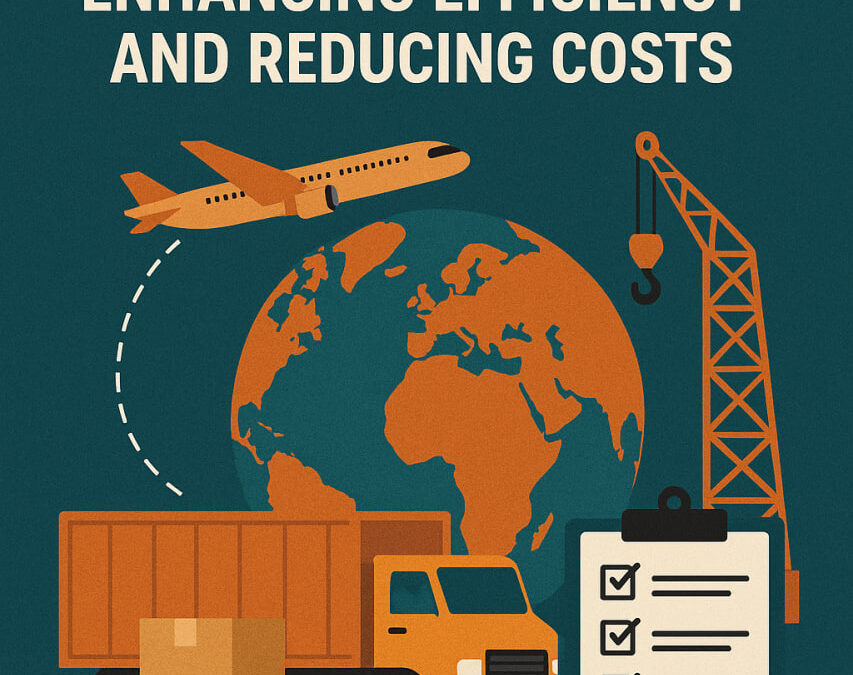Logistics Sector in India: Enhancing Efficiency and Reducing Costs

RBI Surplus Transfer: A Record-High Payout to the Government
June 19, 2025
Revised Priority Sector Lending (PSL) Norms: Boosting Credit
June 19, 2025Logistics Sector of India
Logistics Sector in India: Enhancing Efficiency and Reducing Costs
Why in News?
India’s logistics cost has been reassessed to be in the range of 7.8-8.9% of GDP for the year 2021-22, significantly lower than the previously circulated estimate of over 10%.
Key Insights
- The assessment was conducted by the National Council of Applied Economic Research (NCAER).
- This task was assigned by the Department for Promotion of Industry and Internal Trade (DPIIT).
- The World Bank has reviewed the methodology and recognized its robustness for future refinements.
- Past estimates include:
- NCAER (2017-18): 8.9% of GDP
- CII (2015): 10.9% of GDP
- Armstrong & Associates (2016): 13% of GDP (widely accepted benchmark)
- The National Logistics Policy (NLP) 2022 aims to reduce logistics costs to global benchmarks by 2030.
Logistics Landscape in India
The logistics sector consists of multiple key components:
- Procurement & Inbound Logistics: Sourcing raw materials, negotiating contracts, and transportation.
- Warehousing & Inventory Management: Efficient handling, storage, and packaging.
- Transportation & Distribution: Moving goods from production to the final consumer.
- Supply Chain Optimization: Enhancing connectivity, accessibility, and reducing cost inefficiencies.
Significance of an Efficient Logistics System
- Enhances Supply Chain Efficiency: Ensures businesses meet consumer demand promptly.
- Strengthens Connectivity & Accessibility: Facilitates economic integration and expands market reach.
- Boosts Cost Competitiveness: Lowers operational costs, enhancing profitability.
- Generates Employment: Creates jobs in transportation, warehousing, and logistics services.
Government Initiatives for Logistics Sector Development
1. National Logistics Policy (NLP) 2022
- Aims to streamline logistics services and digitize processes.
- Complements PM Gati Shakti National Master Plan (NMP) for infrastructure development.
- Targets:
- Reduce logistics costs to global benchmarks (8-9% of GDP).
- Improve India’s Logistics Performance Index (LPI) ranking (aiming for the top 25 countries by 2030).
- Establish a data-driven decision-making mechanism.
- Includes the Comprehensive Logistics Action Plan (CLAP), focusing on eight key areas, including digital integration and service improvement.
2. Key Government Interventions
- Unified Logistics Interface Platform (ULIP): Integrates 34 logistics-related portals across different ministries, with GST data inclusion.
- EXIM Logistics: Enhancing India’s export-import connectivity through infrastructure upgrades and procedural improvements.
- Infrastructure Status for Logistics: Facilitates access to lower-cost infra financing.
- Logistics Ease Across Different States (LEADS): An indigenous logistics performance index ranking states annually.
- Multimodal Logistics Parks (MMLPs): Plans for 35 MMLPs with a $6.2 billion investment to facilitate cost-effective freight movement.
- Bharatmala Pariyojana: Aims to construct 65,000 km of national highways for seamless freight mobility.
- Dedicated Freight Corridors (DFC): Targets increasing rail freight share from 27% to 45% by 2030.
- Sagarmala and Inland Waterways: Strengthens port-led development to leverage India’s 7,500 km coastline and 14,500 km inland waterways.
Challenges in India’s Logistics Sector
- Fragmented Supply Chain: Small independent players lead to inefficiencies.
- Regulatory Complexities: Multiple taxation layers and bureaucratic hurdles.
- Last-Mile Connectivity Issues: Poor road infrastructure, congestion, and mapping inefficiencies.
- Skill Shortages: Lack of trained professionals in supply chain management.
- Security & Cyber Risks: Threats to cargo, assets, and digital infrastructure.
Way Forward
- International Collaboration: Initiatives like India-Middle East-Europe Corridor (IMEC) to enhance global connectivity.
- Sustainable Logistics: Focus on carbon efficiency, emission trading, and compliance with global standards.
- Technological Innovations:
- AI-powered predictive analytics for inventory and demand forecasting.
- IoT-enabled real-time tracking for efficient monitoring.
- Automation in warehousing and last-mile delivery to improve efficiency.
- Boosting Investments: Encouraging private and foreign investments for infrastructure expansion.
- Enhancing Rail Transport: The National Rail Plan aims to increase rail freight share to 45% by 2030.
MCQs on Logistics Sector
- What is the estimated logistics cost as a percentage of GDP for India in 2021-22, as per NCAER’s latest assessment?
(a) 10.9%
(b) 13.0%
(c) 7.8-8.9%
(d) 9.5%
Answer: (c) 7.8-8.9%
- Which of the following initiatives aims to integrate digital logistics systems and facilitate logistics-related data sharing in India?
(a) Bharatmala Pariyojana
(b) Unified Logistics Interface Platform (ULIP)
(c) Sagarmala Project
(d) Multimodal Logistics Parks (MMLPs)
Answer: (b) Unified Logistics Interface Platform (ULIP)
UPSC Mains Questions on Logistics Sector
- Analyze the significance of the National Logistics Policy (NLP) 2022 in reducing logistics costs and enhancing India’s global trade competitiveness. Suggest measures for further improvement.
- Discuss the challenges faced by India’s logistics sector in achieving the government’s target of reducing logistics costs to 8-9% of GDP by 2030. How can digital and infrastructural reforms address these issues?
Post Views: 8

